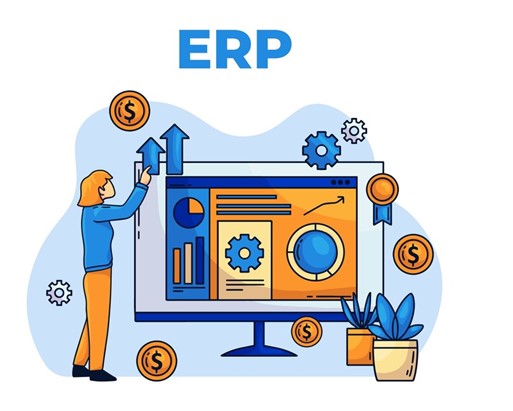Enterprise resource planning (ERP) systems are needed for businesses to have good control over key processes such as accounting, supply chain, manufacturing, HR and many more. In recent years, however, with the advent of cloud computing, businesses now have a choice to deploy ERP solutions on-premise or in the cloud.
Cloud and on-premise ERPs have vastly different integration capabilities and methods. In order to decide which integration approach would be better for a business, you need to consider factors like cost, scalability, data security and customizability.
This article provides a comprehensive comparison between cloud and on-premise ERP integrations across critical factors that technology decision-makers must consider before selecting an integration approach. It also offers advice on determining if your business is better suited for the cloud or on-premise ERP ecosystem based on your operating model, growth objectives and enterprise architecture.
Cloud ERP Integration Overview
ERP solutions for the cloud from ERP software development services can be hosted on vendor or third-party servers and accessed through the Internet. With this deployment model, businesses don’t have to invest in on-premise hardware and ERP infrastructure.
Cloud ERP systems such as Oracle NetSuite, SAP S/4HANA Cloud, and Infor CloudSuite are more commonly built using modern API-led connectivity protocols rather than traditional on-premise approaches like batch data transfers or point-to-point integration.
Key integration capabilities with cloud ERP deployments include:
- Real-time data sync between cloud ERP and other SaaS apps via APIs
- Simple app integration through cloud ERP marketplaces
- Prebuilt connectors to popular SaaS platforms like ecommerce, payments, marketing automation etc
- EDI and supply chain integration through cloud B2B networks
- Integration Platform as a Service (iPaaS) for interfacing legacy on-premise systems
Agility and Speed
The API-led architecture of cloud ERP systems integration accelerates the implementation of new apps and workflows to keep pace with business priorities. IT can build integrations in days/weeks rather than months with on-premise ERPs.
Lower TCO
With cloud ERP system integration, there is no need for upfront capital expenditure on integration software, hardware and middleware. Businesses only pay for used capacity as an operating expense.
Scalability
You can easily scale prebuilt and custom integrations to handle higher transaction loads as your ERP data integration volume grows without disruption. Usage-based pricing allows paying for only additional capacity.
Enhanced Data Security
Cloud ERP vendors spend a lot of money on advanced security controls like encryption, tokenization, role-based access etc., and the integrations built using these systems also come with the same security capabilities.
Innovation Velocity
Cloud ERP platforms are often updated, so their integration capabilities utilize the latest technologies, such as AI/ML, blockchain, advanced analytics, etc. On-premise systems do not provide these latest integration features.
Key Challenges with Cloud ERP Integration
While cloud ERP integrations accelerate digitization, some downsides need consideration:
Vendor dependence risk
Businesses become technologically wedded to the cloud ERP vendor. Migrating large data volumes across systems is challenging if the provider relationship turns sour later.
Customization constraints
Although configuration is possible, custom-coding cloud ERPs like SAP S/4HANA Cloud are restricted. It limits bespoke modification of prebuilt integrations.
Integration costs add up
While cloud ERP software integration needs lower initial investment, custom development and licensing connector apps in the marketplace incur ongoing costs.
Integration testing limitations
Cloud ERP vendors don’t always fully simulate live production scenarios during integration ERP system testing, which can hinder the anticipation of post-go-live issues.
Cloud vendor technical support
While some cloud ERP vendors provide prompt, expert technical support for complex integration issues and niche troubleshooting that requires troubleshooting skills, others don’t.
On-Premise ERP Integration Overview
SAP ECC, Oracle E-Business Suite, and Infor LN are ERP software installed on on-premises servers in the company system. The administration of the ERP platform and databases and the management of upgrades, security patches, and fixes are all the responsibilities of the IT team.
Legacy B2B protocols like EDI and point-to-point middleware have historically dominated integration architectures for on-premise ERP deployments. However, modern integration tools like Boomi, MuleSoft and Microsoft BizTalk now empower API-based connectivity even with on-premise ERPs.
Here are some of the prominent ERP integration methods with on-premise ERP platforms:
- EDI for B2B data interchange with supply chain partners
- Point-to-point integration using middleware
- API connectivity to/from ERP using an integration platform (iPaaS)
- Batch data integration for periodic large data transfers
- On-premise or hosted integration platform installations
- Change data capture for detecting and propagating updates
- Enterprise service buses (ESB) for routing integration traffic
- Process integration with business process management (BPM) tools
While cloud integration delivers agility, on-premise ERP integration brings other strategic advantages:
Customization Freedom
On-premise ERPs allow modifications to source code to enhance and tailor prebuilt integrations. They offer greater flexibility than cloud ERPs.
Better Legacy Connectivity
On-premise ERP software integration tools have well-established legacy protocol adapters that seamlessly interface with outdated systems. Thus, it is easier to retain legacy compatibility while upgrading an integrated ERP system.
Continuity During Outages
Integration processes are minimally disrupted when the internet goes down as servers are inside the corporate firewall. The problem is that if externally hosted systems become unavailable, cloud integration workflows stop.
Stricter Data Security
Direct control over servers without surrendering them to cloud vendors for stringent compliance and security reasons are some highly regulated industries such as defense and banking, etc.
Superior Support Mechanisms
On-premise ERP platforms allow easier leveraging of internal IT talent and external system integrators for technical support during complex integration issues. Resolution times are faster.
Key Challenges with On-Premise ERP Integration
However, businesses pay a steep price for the wide-ranging control and customizability delivered by on-premise ERP integration in certain areas:
Inflexible and slow
Diplomatic protocols and point-to-point links between on-premise ERP and surrounding systems make agile integration challenging. Responding to changing needs involves prolonged development and testing cycles.
Substantial hardware demands
Maintaining high-performance infrastructure for integration middleware, databases, backup systems etc., drives up capital expenditure costs with on-premise ERP integration.
Scaling limitations
Physical capacity in the on-premise data center constricts the addition of integration infrastructure to handle higher transaction volumes during business growth.
Vendor dependence
While customization is possible, skilled resources for legacy ERP platforms like SAP ECC are dwindling. This compels businesses to pay premiums for vendor consulting.
Waning innovation
Vendors are focused on developing their cloud ERP offerings. As a result, fewer cutting-edge features reach on-premise product versions through upgrades, causing integration capabilities to lag.
Making the Right Choice: Cloud vs On-Premise ERP Integration
While both cloud and on-premise ERP integration models have trade-offs, the right choice depends on your business priorities and IT landscape:
- Transaction volume – High-volume integration needs may require on-premise for optimal performance
- Budget – Cloud integration with pay-per-usage may suit mid-market firms reluctant to large upfront investment
- Agility needs – Frequently changing integration needs favor cloud ERPs for swift reconfiguration
- Compliance needs – Heavily regulated industries may prefer on-premise for localized security control
- Legacy landscape – Lots of outdated surround systems prefer on-premise integration with better legacy bridges
- Innovation culture – Businesses that reward innovation gravitate towards cloud ERP’s latest integration features
- Application landscape – A predominantly cloud-based application portfolio suits cloud ERP integration, while on-premise apps align with on-premise ERP integrations
In addition, if an organization has a long-term hybrid enterprise architecture strategy, it can use both cloud and on-premise integration models at the same time.
For example, you can keep legacy on-premise ERP integration and cloud ERP integration with new SaaS capabilities. It allows you to pivot from existing systems to becoming cloud native at a sensible pace, keeping the critical operations running.
The bimodal integration architecture will align business IT objectives in terms of agility, innovation and risk mitigation.
Conclusion
Cloud ERP integration addresses serious challenges like inflexibility, upgrade headaches, and high total cost of ownership of legacy on-premise ERP platforms, albeit with its limitations: vendor dependency and customization constraints.
While cloud ERP integration has compelling advantages for most modernizing enterprises, it deserves a careful analysis of your integration needs, IT ecosystem, business priorities and target operating model before you leap.
As cloud ERP adoption picks up sharply through 2025, the selection of integration technology now represents a watershed moment for the right digital transformation and innovation cadence.
After methodically weighing the pros and cons of available integration approaches, choose wisely when to go with one, and then avoid modernization journeys that are completely misaligned and can seriously impede what you are trying to achieve with modernization.



































